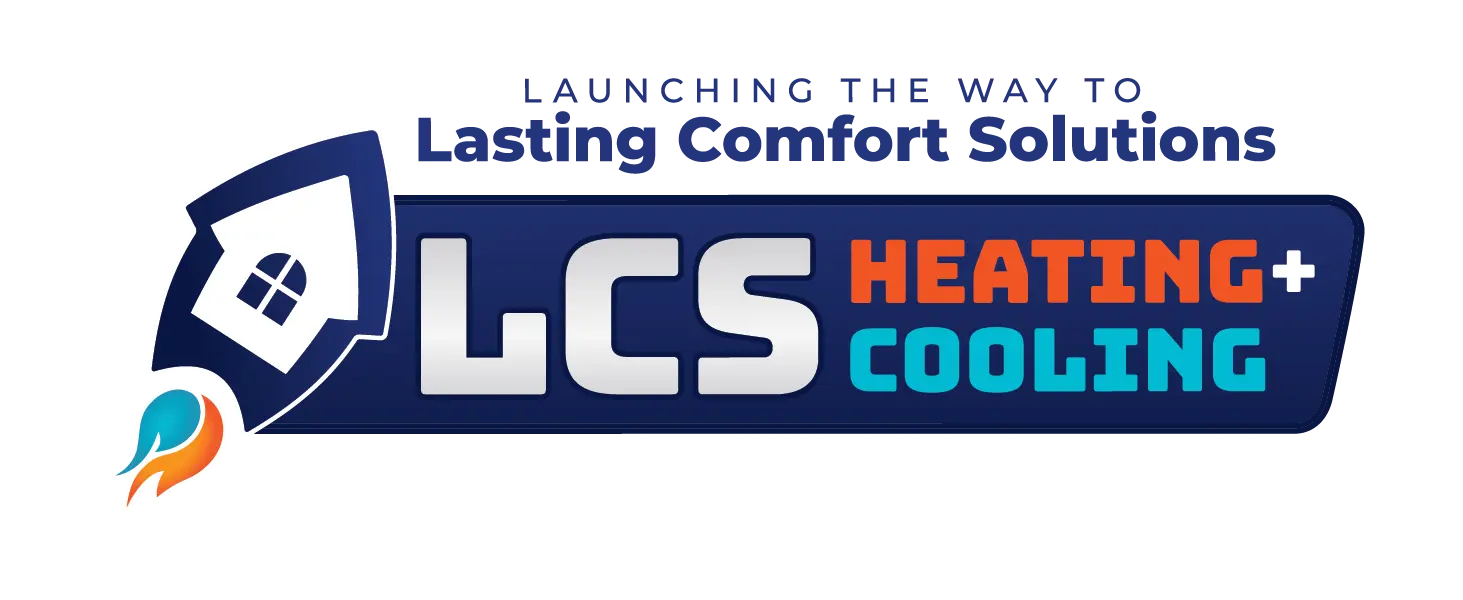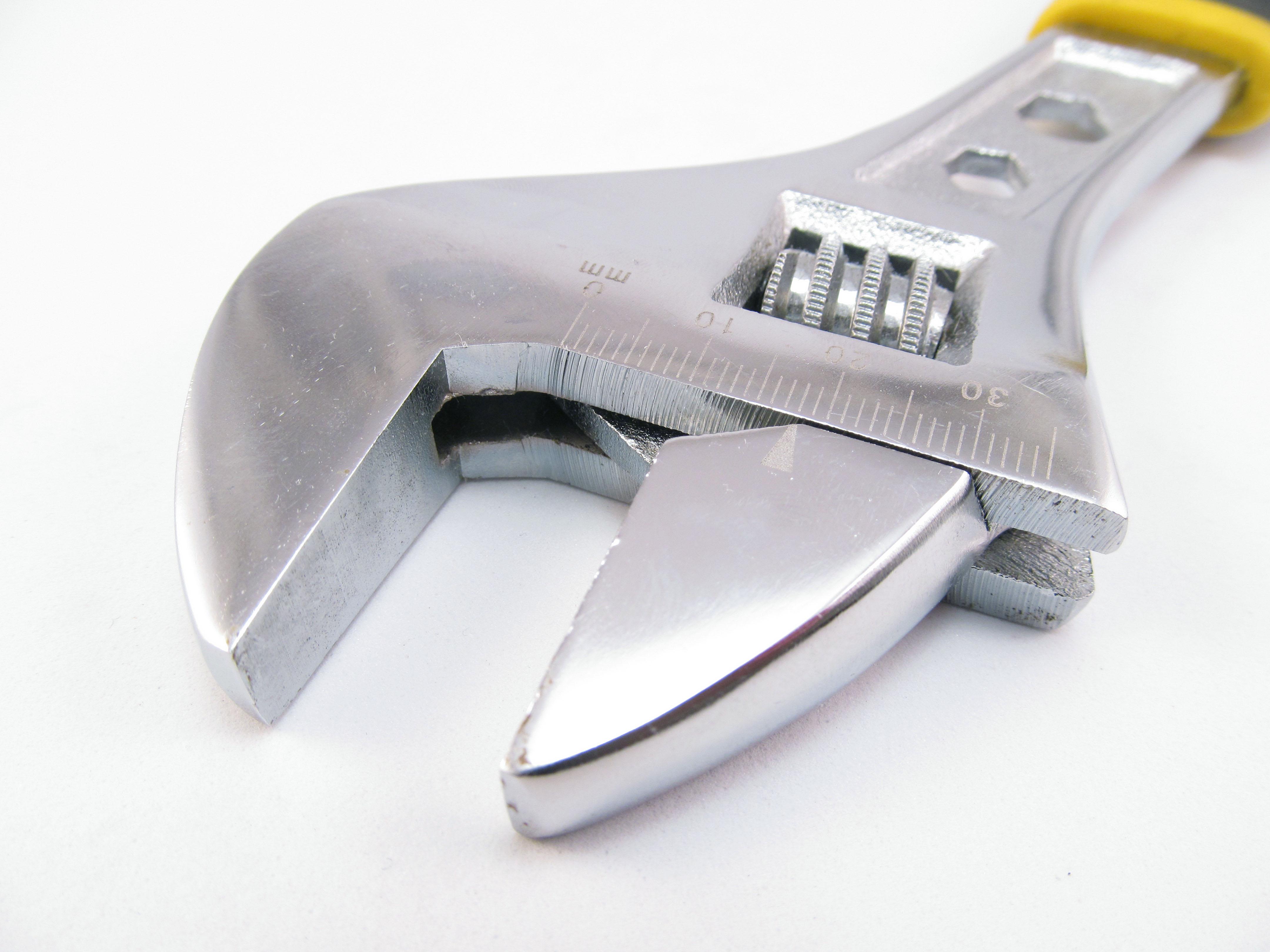Energy savings are usually a year-round concern for homeowners. You want to keep costs down, but still maximize your comfort. That’s where efficiency comes into play. Whether your HVAC system is heating or cooling your home, it always helps to keep on top of your maintenance plans. When you run the numbers with a truly efficient system, it’s easy to see how you can keep those energy costs low.
Utility Costs and Efficiency Ratings
In the state of Indiana, our average residential electricity rate is around 10.5 cents/kWh. To keep things simple, let’s just say you pay $100/month to power your home’s HVAC system. You might look at your utility bill and think that it’s an accurate statement for what you spend to heat your home in the winter or cool it down during the summer. But in reality, the equation is a little more complicated. The amount of money you spend isn’t just about the local utility rates. You also have to consider your equipment’s efficiency rating.
For units that are older, you might be looking at 80% efficiency. That means your costs can get pretty high because for every $100 you spend to heat your home, you’d essentially let $20 fly away. A furnace that’s operating at 95%, on the other hand, would only lose $5. The other $95 would go directly into heating your home. That’s why efficiency is key. If you’re living with an older furnace, heat pump, or air conditioner, you’ll have to think about these hidden costs. Your energy bill is likely higher than it should be.
Realistic HVAC Costs: Repair vs Replace
Having a general idea of where your HVAC equipment’s efficiency ratings are can help inform your decision for any repairs later on. Say your air conditioner doesn’t work like it should after the winter season wraps up. Will you need to invest in a completely new system? Hopefully not, but it all depends on the age of your AC unit and the repair costs. Thinking about those two factors will help point you in the right direction for whether to get HVAC repairs or a total replacement.
Here's one example to consider: A $500 repair on a 6-year-old system makes more sense than a $500 repair on a 16-year-old system. While you're spending the same amount of money, the chance of there being more repairs on that older system is pretty high. Sure, the upfront cost of a new system is more than the repair itself, but there's peace of mind with a warranty. Plus, you can look forward to those potential utility cost savings with a higher efficient system.
Ready for an Efficient HVAC System?
You’re probably already aware that changing your HVAC filter goes a long way for improving efficiency. But there are other ways to get energy savings too. Annual cleaning and tune-up services for both your furnace and air conditioner keep your systems running smoothly. Then you can limit your risks of having a bigger problem pop up down the road.
It might help to think of your HVAC annual maintenance like the regular oil changes and tire rotations you get for your car. (Plus, annual maintenance is what keeps your manufacturer and labor warranties in place.) Your equipment will work better when you just do a few simple things. To streamline the process, we offer our customers two different types of annual plans. It’s a low-cost investment for big rewards.
Our LCS Gold Membership includes two services each year: one cooling tune-up for your air conditioner, and the same for your furnace. It also gives you $20 off your regular-hours service calls, waives that service call for repairs over $300, gives you discounts on duct cleaning and indoor air quality products, and more. The membership is just $155 per year, and helps ensure that your equipment is running at its best—so you get the best savings on your energy bills.
Our LCS Platinum Membership includes those same maintenance services, but waives the service call with paid repairs completed during regular business hours. It also gives you discounted rates for after-hours service, a one-year supply of air filters, up to $700 in savings on a full system replacement, and more. To learn more about your HVAC repair options and how to improve your energy efficiency, please visit our webpage for annual maintenance plans. We look forward to serving you!
February 18, 2020
leaves in fall and the brisk air in winter. Come spring and summer, though, it’s another matter entirely. Poor indoor air quality during this time of year can feel either humid and stuffy, or terribly stale. A lot of people will crack open a window to try to fix the situation. But there’s a much better (and more efficient!) way to address your stale air problems.
Why Does the Air Feel Stale?
Stale air is created in a number of different ways. Some of the most common causes are from lack of ventilation and various contaminants. The odors and allergens from commercial cleaning products and dust mites are a big no-no for fresh indoor air. But without a good filtration system in place, it’s hard to keep these issues at bay. They just keep adding up to create that lingering stale air vibe.
Another reason your air can feel stale is because of improper humidity levels. Over time, poor circulation can make your indoor air feel even more stuffy. You need to introduce fresh air into your home and workspace to keep them from turning into “stale and stagnant” environments. Fortunately, adjusting your indoor humidity and making sure your ventilation system is efficient and clean can go a long way. A little maintenance or a couple upgrades are usually all it takes to get clean indoor air every day of the year!
4 Ways to Fix Stale Air
There’s no sense to live with uncomfortable indoor air. In fact, those conditions can be a real problem for productivity. Multiple studies have shown that poor ventilation reduces cognitive functions. To feel your best, it’s important to breathe good, clean air. You can help get your indoor air quality up to par with these solutions—listed in order of Okay, Good, Better, and Best:
1. Open a window—but not for too long.
If you’re struggling with stale air, you can always open a few windows. Just remember, this won’t be a real long-term solution. For one, this can add a bunch of sticky humidity to your indoor air. Opening the windows can also let a whole bunch of allergens fly inside. Pollen, dust, and other unwelcome odors (the neighbor’s lawnmower exhaust, for example) can slip into your space without the right filtration. Then you’re stuck with a bunch of other problems! Plus, leaving your windows open while the AC is running can be real energy waste. The money spent on cooling your space then, essentially, just floats outside.
2. Turn on the fan.
Another option is to put a new air filter into your HVAC unit and turn on your ceiling fan. Better yet—put your thermostat on its “Fan Auto” setting! Then you can recirculate the air without introducing new allergens to the mix. The counterclockwise direction on your fan can help push the cool air down to keep the space feeling fresh. This setup can be a great “quick fix” to kick off the new season.
3. Change your air filter.
A better way to improve your air is to put in a new filter. This can allow your AC to work more efficiently. Remember: 4 to 5-inch media filters should be swapped out every 6-12 months, but 1-inch air filters should be changed every one to two months. If you live in an area that has lots of construction going on or fields being plowed, you might need to change your filter more often. Putting in a new filter every month, or even every couple week might be necessary depending on your conditions. If you haven’t checked yours in a while, it’s probably due for a change.
4. Invest in a new filtration system or dehumidifier.
The best way to fix stale air problems is to clean up your indoor air around the clock. Homes and office spaces that are tightly-sealed sometimes need special systems installed. The right HVAC equipment will work to improve your indoor air by cycling it with filtered air from outside. But you might also want a new air cleaner or an add-on unit to tackle humidity issues. If you’re sick of stale air, these are great upgrades to help you breathe easy. Talk with your local HVAC company to find the best energy-efficient system for your layout!
Schedule an Indoor Air Quality Review
For the ultimate spring cleaning, don’t forget about your indoor air quality. The air we breathe affects us every minute of every day, so it deserves special attention. Ventilation problems with older homes and buildings can definitely take a toll. These environments can even cause different health issues, including headaches, eye irritation, and coughing. Typically, these problems are grouped together and referred to as sick building syndrome. The same issues from poor ventilation can also show up in your home.
When changing your air filters and turning on the ceiling fan aren’t enough to fix your stale air problems, it’s time to call on your local indoor air quality professionals. A quick review of your existing ventilation can help determine any problems spots that need improving. An upgraded air cleaner, dehumidifier, or ventilation system might be all you need for a truly refreshing, healthy lifestyle! Contact LCS Heating and Cooling today to learn more.
March 21, 2018
The ENERGY STAR label is pretty recognizable, but that blue and white logo is more than just a pretty sticker. It’s proof from the EPA that a product is in the top tier for efficiency. And that means big savings on running your home appliances.
The label’s real goal is to help consumers identify energy-efficient products. Since the program’s inception in 1992, ENERGY STAR has helped people save an estimated $430 billion on their utility bills. But do you know what those savings actually mean for your own annual expenses?
About the Ratings
As a general rule, the ENERGY STAR label is awarded to the top quarter of products on the market. Put another way— an air conditioning unit that qualifies for the ENERGY STAR certification typically ranks in the top 25% for energy efficiency. This classification helps tell consumers which products might have a better long-term value.
You see, it’s not just about the upfront costs on major home appliances. You also have to consider how much it will cost to run the equipment every day and every year. In that sense, ENERSY STAR appliances are a lot like cars with low gas mileage. Two vehicles might cost the same on paper, but the one that can get 5 or even 7 more miles to the gallon might be a better option because it’s less expensive to run. Saving on energy costs is always better for your bottom line.
Savings with ENERGY STAR Appliances
The latest technology makes a big difference with efficiency. Check the numbers and it’s easy to see—opting for ENERGY STAR appliances is a great way to lower your utility bill every season.
Laundry Machines and Dishwashers
New “smart” features allow your machines to use less energy (and less water) when cleaning your clothes and dishes. And you still get a good clean! Laundry machines that qualify for the ENERGY STAR label require 40 to 50% less energy, and dishwashers work with 41% less energy (compared to the federal minimum standards).
Refrigerators and Freezers
Better insulation and more accurate temperature readings make these ENERGY STAR products big winners. Qualified refrigerators use at least 15% less energy, and qualified freezers use at least 10% less energy than what the current federal standards require.
Heating and Cooling
Roughly 50% of your home’s total energy costs are spent on heating and cooling. Choosing high-efficiency models can help knock down the total on your utility bills and give you some pretty noticeable savings month-to-month. ENERGY STAR air conditioners, for example, are typically 15% more efficient than other standard units.
Smart Thermostats
Pre-programed settings and WiFi features help keep your home comfortable and energy-efficient 24/7. Although the ENERGY STAR specification for programmable thermostats is no longer active, installing a “smart” thermostat is easily one of the best home upgrades you can make. Homeowners can save an estimated $180 every year on their energy costs just by making the switch to a newer model.
More Ways to Save
Your ENERGY STAR appliances aren’t just helping your lower your utility bills—they can also give you credit on your taxes. Whether you’ve upgraded some windows or doors in your home, or just swapped out your dishwasher for a newer, more efficient model, be sure to claim those credits on your taxes.
ENERGY STAR qualified central air conditioning units can give you a $300 tax credit, and the same goes for high-efficiency heat pumps. Qualified gas furnaces will get you a $150 tax credit. Check out this overview on 2016 benefits for more information. It’s another great perk of efficient equipment!
And remember: The high-efficiency ratings on your HVAC equipment heavily rely on annual maintenance. Wiring and electrical parts need to be regularly tested to make sure they’re running at peak efficiency. If you haven’t already scheduled your spring system tune-up, be sure to give LCS a call at (317) 238-3961. Our team would be happy to help you out!
March 31, 2017
It can be hard to figure out the best course of action when your HVAC unit starts acting up because there are so many factors to consider. The size, age, financing options, and repair costs on an HVAC system all contribute to making the “right” decision on whether to repair or replace.
As a general rule, it’s usually a good idea to replace a product when its repairs are climbing over 50% of a new item cost, but a real cost comparison is often more involved. Sure, a repair bill of $300 isn’t nice to look at, but it still looks cheaper than an entire system upgrade. On the other hand, the lower cost isn’t always the smartest move. Say your equipment is 15 years old and you’ve already made a $500 repair earlier in the year…well, then the math may not be so easy. Trying to predict what else might go wrong with your unit in a couple years (or even the next 6 months) is a tricky gamble. That’s why we recommend looking at some concrete facts.
Reasons to Repair
1. Is the broken part under warranty?
When a part is covered under warranty, it’s usually best to get the repair and move on. You might still want to consider the cost of the labor (if there is any), but warranties usually make the repair vs. replace conundrum pretty clear-cut. If nothing else is wrong, why pay for a new air conditioner or furnace?
2. Is your system less than 10 years old?
Your HVAC equipment might have different life expectancies, but heat pumps, air conditioners and furnaces are said to last 12 to 15 years on average. If your unit is 10 years old or less, your chances of having frequent problems are a lot lower, so making the quick repair tends to be more appealing than full replacement.
3. Are you planning to move in the next year or two?
When your odds of moving are high, confirm that your unit isn’t at the end of its projected lifespan before opting for the repair. Replacing or upgrading your HVAC unit could help your house stand out to potential buyers; but if the unit is in relatively good condition or still under warranty, you might be better off sticking with the easy fix.
4. Is the unit right for your home?
This question can be a little trickier to answer on your own, but a good HVAC tech will tell it to you straight. Some furnaces and air conditioners are actually too big for their home they are installed in and end up wasting energy and money. Proper installation goes a long way with your unit’s efficiency too, so if you trust that your unit is in the right location, sized right, and has the right efficiency rating, you’ll likely feel good about getting the repairs.
Reasons to Replace
1. Has your unit needed costly repairs in the last two years?
Older HVAC systems are more likely to have frequent repair issues. When your unit has passed the warranty coverage date and repair costs only seem to escalate, you’re probably toeing the line for replacement.
2. Has the system been under-performing in other ways?
Maybe you’re constantly adjusting the thermostat to get comfortable, or the air indoors feels stuffy, damp, or just “off.” Is your furnace or air conditioner starting to sound louder than ever before? Some of these annoyances could be fixed with quick repairs, but if not—it might be time for new equipment.
3. How much could you save with a more efficient unit?
Check out the energy savings calculator to estimate the money you can pocket each month from a system upgrade. The latest technology can cut energy costs by as much as 40% and still run quieter than models made 10 years ago. If you’ve made other efficiency updates to your home—like new windows or insulation—an HVAC system with a good ENERGY STAR rating might be what you’re missing to really kick those saving into high gear.
4. Are good financing options available?
If your HVAC company can help you identify cost-effective financing strategies, a system replacement might be worth your while. When considering replacement options, knowing about seasonal specials, manufacturer rebates, or 0% financing opportunities with a local bank can make you feel a lot better about going with a new air conditioner or furnace.
Now that you’ve weighed the possibilities, tally up your Yes and No answers from each category. Answering “Yes” to 2 or more questions is a good indication that you’ll want to consider that side’s solution. Consult with your local HVAC tech if you’re still on the fence. They can help walk you through the different scenarios for your current system and home setup so that whether you choose to repair or replace, you can feel confident that it’s the right decision for you and your home!
June 23, 2016




